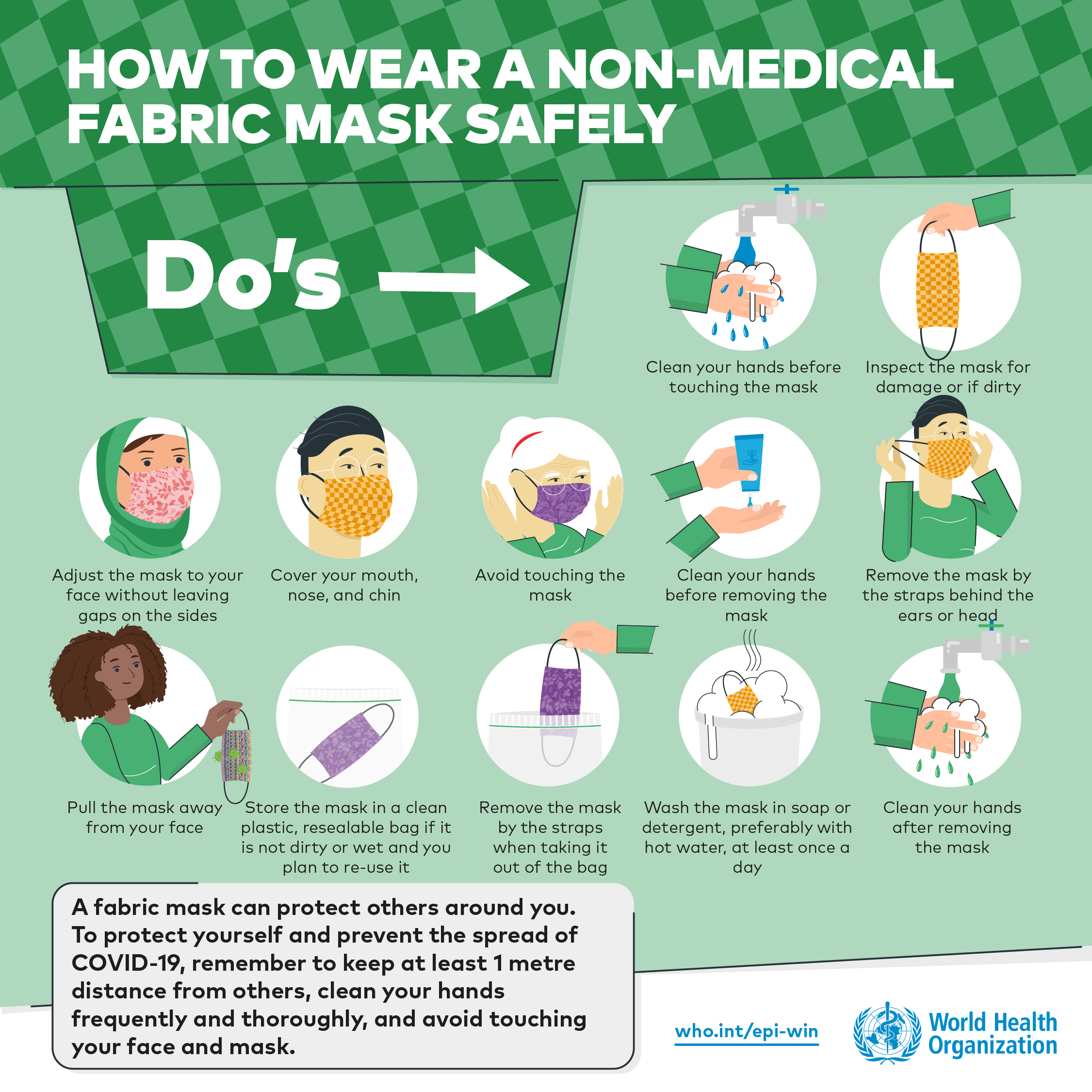
GCED Basic Search Form
Quick Search
You are here
News
The use of masks is part of a comprehensive package of the prevention and control measures that can limit the spread of certain respiratory viral diseases, including COVID-19, the World Health Organization says.
Masks can be used either for protection of healthy persons (worn to protect oneself when in contact with an infected individual) or to control the source of infection (worn by an infected individual to prevent onward transmission).
There are three types of masks used to prevent the spread of COVID-19.
Medical masks (also known as surgical masks): these are made from a minimum of three layers of synthetic nonwoven materials, and configured to have filtration layers sandwiched in the middle.
Respirators (also known as filtering facepiece respirators - FFP) and available at different performance levels such as FFP2, FFP3, N95, N99): these are specifically designed for healthcare workers who provide care to COVID-19 patients in settings and areas where aerosol-generating procedures are undertaken.
Non-medical masks (also known as fabric masks, homemade masks) can act as a barrier to prevent the spread of the virus from the wearer to others.
To use the last type of mask correctly, see the posters below. The posters were prepared by WHO.


WHO also notes that the use of a fabric mask alone is not sufficient to provide an adequate level of protection. In addition to wearing the mask, it is necessary to keep a distance of at least 1 meter from others, often wash or disinfect hands, avoid touching the face or mask with your hands.
URL:
https://en.unesco.org/news/how-wear-non-medical-fabric-mask-safely
